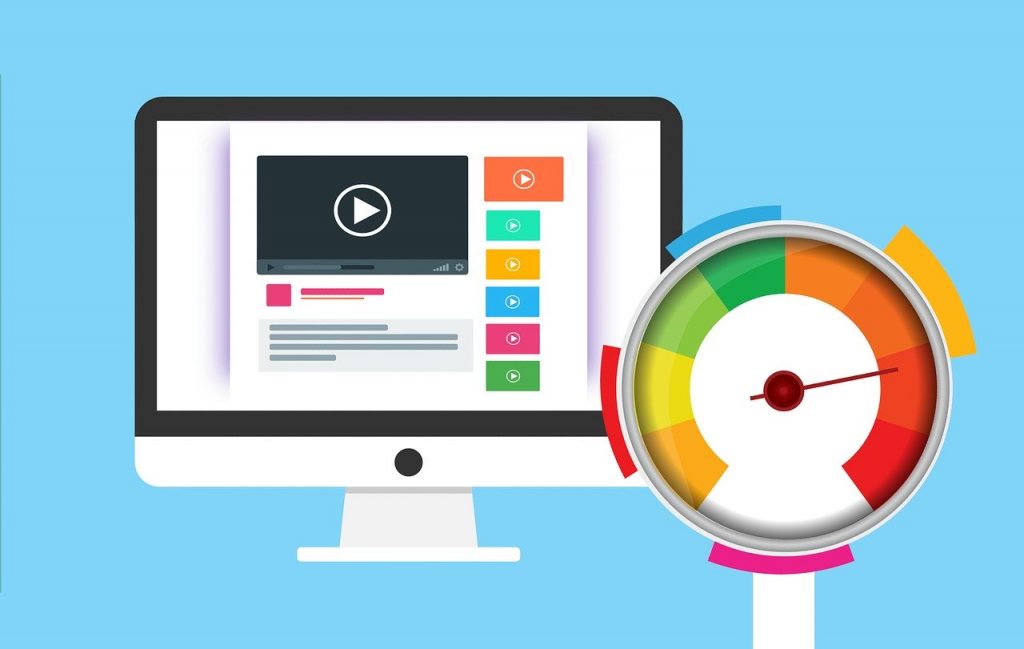20+ Right Ways to Increase Website Traffic Up to 2x – All website owners want their website to be flooded with visitors every day. Online store websites require high traffic so that they can then be managed into leads or customers. Blogs also need high traffic so that later blog owners can post advertisements or advertorial collaborations on their blogs.
20 Surefire Ways to Increase Website Traffic
Since you first created a website or blog, maybe you have tried various ways to increase traffic to your website or blog. From publishing a lot of content consistently, sharing it on social media, to advertising it.
Read more:
- How to Create a Blog – 5 Easy Steps To Starting A Blog
- What Bloggers Need to Know About Domain Authority 5 Tips to Increase It
- How to Add Google Analytics to WordPress Blog
- What is Digital Marketing: Complete Guide for Beginners
Unfortunately, you are not getting the results you want. Your website or blog traffic is still running in place even though you feel you have implemented all the ways to increase it. Do you start to wonder if the method you used was wrong?
The good news is that you’ve found the right blog article. This blog article will guide you to increase website and blog traffic in 20 proven effective ways. Are you ready to increase your website and blog traffic? Here are 20 surefire ways to increase website traffic up to 2 times:
#1. Keyword Research

Writing articles based on personal ideas alone is highly discouraged. Not doing keyword research before writing articles is a fatal mistake for all website and blog owners. Only relying on personal ideas, without doing keyword research, in writing articles will make it difficult for your website to be found in Google search results.
Your writing idea can be good and interesting in your opinion, but if no one is at all interested in the idea, your website traffic will be difficult to increase. By doing keyword research, you can find keywords that are much searched for by Google search engine users.
You can do keyword research in a number of ways. There are various kinds of tools that can help you find the right keywords for your website and blog. Choose from 9 different keyword research methods that suit your needs.
#2. Target Long Tail Keywords
When doing keyword research, you will come across two types of keywords, namely short-tail keywords and long-tail keywords. Short tail keywords are keywords that consist of one to two words. For example, keywords such as “create a blog” or “example blog”.
Short tail keywords tend to have high search volume, but with high competition as well. To win the competition on short-tail keywords is usually more difficult because almost all websites target them.
Before winning the tough competition on short-tail keywords, you can target long-tail keywords first. Long-tail keywords are keywords that consist of more than three words. For example, “how to create a website with WordPress” or “how to create an online store”.
These types of keywords usually have a lower search volume than short-tail keywords, but they tend to be less competitive. You can start targeting high rankings in long-tail keywords first before competing on short-tail keywords.
#3. Use LSI Keywords
From keyword research, you will get lots of keywords for your article idea. However, often keyword research tools provide rigid keywords with limited variations. The system used by keyword research tools usually homogenizes several similar keywords into one keyword. As a result, the variety of keywords is limited.
Though not everyone uses the exact same keywords when searching for a topic. People use a wide variety of keywords to search for specific topics. You need to know variations of these keywords so that your article becomes more human.
You can find a wide variety of keyword variations using LSI Keywords. LSI is short for Latent Semantic Indexing. LSI Keyword is a collection of keywords that are found on a particular topic and are related semantically. To find variations of these keywords, you can use services such as LSIGraph or LSI keywords.
#4. Write Complete Articles
What is the average length of the articles that you have published? 500 words or even just 300 words? If the articles you write are still around that number, you should start increasing the number of words in each of your articles.
The length of your article is one of Google’s assessment factors in determining ranking in search results. Google considers long articles to be complete articles and can answer searchers’ questions.
How long should you write in order to be liked by Google? Based on Backlink.io analysis, the average length of blog articles that appear on the first page of Google search results is 1890 words. So keep the length of your blog articles around that number.
Even so, you also have to adjust the length of your blog article to the context you are writing in. For example, the topic of a recipe for making fried rice only takes 800 words to describe it completely. Will you still be able to get to the top of the search results? Yes, as long as your article is more complete than your competitors’ articles. So make sure to research competitors first before writing articles.
#5. Write a catchy title
The title is the element of the article that people see first in search results. According to Copyblogger, 8 out of 10 people admit to reading a title before clicking on an article from search results. However, only 2 out of 10 people actually read the articles it opened.
Therefore, you must create an attractive article title so that searchers on Google will notice it. There are many methods of writing titles that you can apply. First, use numbers and lists. People really like titles with numbers and listicles (list articles). For example, in the title of this article, I used the title 20 Surefire Ways to Increase Website Traffic Up to 2X.
Second, state clearly what you discuss in the article. For example, the topic you will discuss is what a blog is about. Write a clear title such as Understanding Blogs and Types, Functions, and Examples. That way potential blog readers can find out at a glance what they will get from your article.
Third, put strong adjectives in the title. Many adjectives can be used for titles depending on the topic to be covered. For example, because this article aims to guide readers to increase website traffic, I use the adjective “telling”. This means that readers will get really effective tips from this article. You can use best, potent, effective, or any other adjective.
#6. Add interesting visuals
Long articles are not enough. You also have to be creative in processing your content to be interesting and not boring for readers. If only faced with writing, of course, readers will get bored and immediately leave your website or blog.
The number of website visitors who immediately leave the website or blog is known as the bounce rate. Bounce rate is also a factor in Google’s assessment of its search results. A high bounce rate means your content is not helping your readers enough. As a result, website ranking decreases in search results, and traffic decreases.
This problem can be overcome by adding interesting visuals in your blog articles such as infographics, photos, or illustration images. Interesting visuals not only make visitors feel more comfortable reading but also help them understand the content you write.
#7. Complete the article with a video
To be able to compete with competitors, you are required to write articles about 1900 words long. On the other hand, reading long articles is also hard work for website visitors.
If adding interesting infographics or illustrations isn’t effective enough to help blog readers last longer, you can add videos. Videos are the most effective way to make website visitors feel at home reading your long articles.
The more comfortable website visitors feel at reading your articles, the better your SEO quality is in Google’s assessment. Articles with videos are 53 times more likely to appear on the first page of search results than articles without videos.
#8. Increase Website Speed
Website and blog visitors can’t wait for the loading page. According to Google’s research, 53 percent of Indian internet users leave websites that load longer than 3 seconds. This means that if your website loads for more than 3 seconds, it is more likely to be left by visitors which results in a high bounce rate.
As mentioned in the previous point, a high bounce rate can lower the ranking of your website or blog in search results. Therefore, increasing the speed of your website and blog is a must.
#9. Make sure your website is responsive
Fast website loading is not enough. You also need to make sure your website is responsive on all devices, both desktop, and mobile devices. Moreover, Indian internet users now access the internet more via mobile devices. Based on Google’s research, 94 percent of Indian internet users access the internet via mobile devices.
#10. Take advantage of Internal Links
Internal links are links from one page to another on the same website. Even though it sounds trivial, internal links help search engines understand the context and relationships between the pages on your website. Through internal links, search engines will also find out which pages are the most important on your website. So try to create content that can be linked to each other so that you can create neat internal links.
#11. Do a Guest Post
Guest post is writing articles to be published on other people’s blogs. In guest posting, you need to be careful when choosing the blog or website that will publish your article. Choose a blog or website whose traffic is higher than yours. You can publish guest post articles on online media or with influential bloggers in your industry.
The guest post goes both ways. First, you publish articles on online media websites or influencer blogs. In the article, you put a link to your blog or website. Second, you can also invite influential bloggers to write articles on your website or blog. The blogger will certainly share the link to the article he made on your blog on his social media. That way your website or blog will be flooded with traffic from these blogger followers.
#12. Be active in the online community
Usually, people with the same job have a special community or forum on social media such as Facebook, Kaskus, or Whatsapp. Likewise bloggers, internet marketers, and online business people.
You can join several online communities according to the website that you manage. There are many online communities for SMEs, internet marketers, and bloggers. Choose one or more communities that suit you. Apart from getting new connections, you can also promote the website that you manage.
Of course, everyone wants their blog articles to be shared by many people. If possible, the article will go viral on social media. The more viral on social media, the higher the traffic it will get.
In order for more readers to share blog articles on social media, you must make it easier to share social media on your website. One way is to add a share button in all your blog articles.
There are various choices of social media share buttons that you can use. The features offered by each plugin also vary. Some only provide social media share button features. There are also those that provide a complete package from social media share buttons to social media icons.
#14. Update Old Content
After producing lots of content for your blog, don’t forget to evaluate the content. Content evaluation is important to know the performance of each content that you have published.
Through content evaluation, you will find content that has not generated significant website traffic. Do you need to remove this content? Of course not. All you need to do is fix it.
To evaluate the content and determine which content needs improvement, you need the help of Google Search Console. With Google Search Console, you can find out what keywords are filtered on each page of your website.
#15. Relaunch updated content
Updating old content is not enough just by editing content through WordPress. After republishing old content, you also need to share it again on social media. You need to let your readers know that you recently updated the content. You can add the year or the words “Updated” in the title of your latest content.
#16. Send Marketing Emails
Don’t underestimate your email marketing skills. Although many find email marketing distracting, this method is quite effective at bringing in traffic. In fact, a study from McKinsey has proven that email marketing is 40 times more effective at bringing traffic than Facebook and Twitter. Follow this email marketing guide to increasing the traffic of your website.
#17. Take advantage of the medium
Sharing content on social media is not enough. There is one more platform that you deserve to use to share content, namely Medium. The medium allows you to republish (republish) content on your blog using the import feature.
With the import feature, Medium will republish your blog content on its platform and provide a canonical link. Canonical links serve to tell search engines that two similar or identical content as the same URL will not harm your SEO reputation.
In addition to the import feature, you can also publish new content related to your website on Medium and put a link to one of the contents on your blog. Even though you only contribute no-follow links, the second way is still worth trying to promote your blog or website.
#18. Use Paid Search
Website traffic is not only imported from Google’s organic search. You can also bring in high traffic from paid searches. Paid search is a feature to display your website pages as advertisements on Google search results for certain keywords that are relevant to your business.
Every search engine has a paid search feature. Since Google is the most popular search engine worldwide, including in India, I recommend using Google’s paid search feature, namely Google Ads.
Google Ads allows you to target a specific audience for your ad. You can narrow or expand the reach of ads based on location, age, gender, and interests.
#19. Competitor Research

In any competition, watching your opponent’s movements is an important step. Likewise in competitions to win first place in search results. You have to keep an eye on the movements of the competitors in your industry.
One of the competitor research tools that you can use is Ahrefs. Ahrefs provides a Site Explorer feature that allows you to check the performance of a site. Site Explorer will provide reports on backlink quality, domain quality, keywords used, to the quality of organic traffic from a site. You can check the keyword reports that are filtered on your competitors’ websites and select keywords that you can use.
#20. Fix SEO On-Page and Off-Page
You can indeed get traffic from social media, but traffic from organic search remains a priority. In order to secure traffic from organic search, your website must have good SEO quality.
SEO itself is divided into two, namely on-page SEO and off-page SEO. On-page, SEO is an optimization step that is applied to content published on a website or blog page. On-page, SEO includes the title, URL & permalink, article content, headings, and the media in the article.
Apart from optimizing the important elements of your website or blog, you also need to perform outside optimization which is also known as off-page SEO. In on-page SEO you optimize are elements on the website such as URL, title, headings, and so on.
In contrast to on-page SEO, off-page SEO that you will optimize are elements outside the website that affect the ranking in search results. Some elements outside the website that affect website ranking in search results are backlinks and shares on social media.
Read more:
- Complete Guide What is SEO? And How It Works
- How to Create a Website in WordPress Complete Guide
- What is Internet Marketing and How to Get Started
Conclusion:
Increasing website traffic does take a lot of effort and is not easy. However, not easy does not mean impossible. You can apply the methods above to increase your website traffic many times over. However, you must also understand that the methods above do not generate traffic overnight. You have to practice them one by one consistently and you will get them for a long time.
Don’t forget to bookmark and always visit every day Technowizah.com because you can here update the latest Blogging Computer Android games Tips&Tricks Social Media Software Review etc.













![10+ Ways To Take Screenshot on Asus Laptop Windows 10 [2024] How To Take Screenshot on Laptop and PC Windows](https://technowizah.com/wp-content/uploads/2020/06/How-To-Take-Screenshot-on-Laptop-and-PC-Windows-100x70.jpg)
